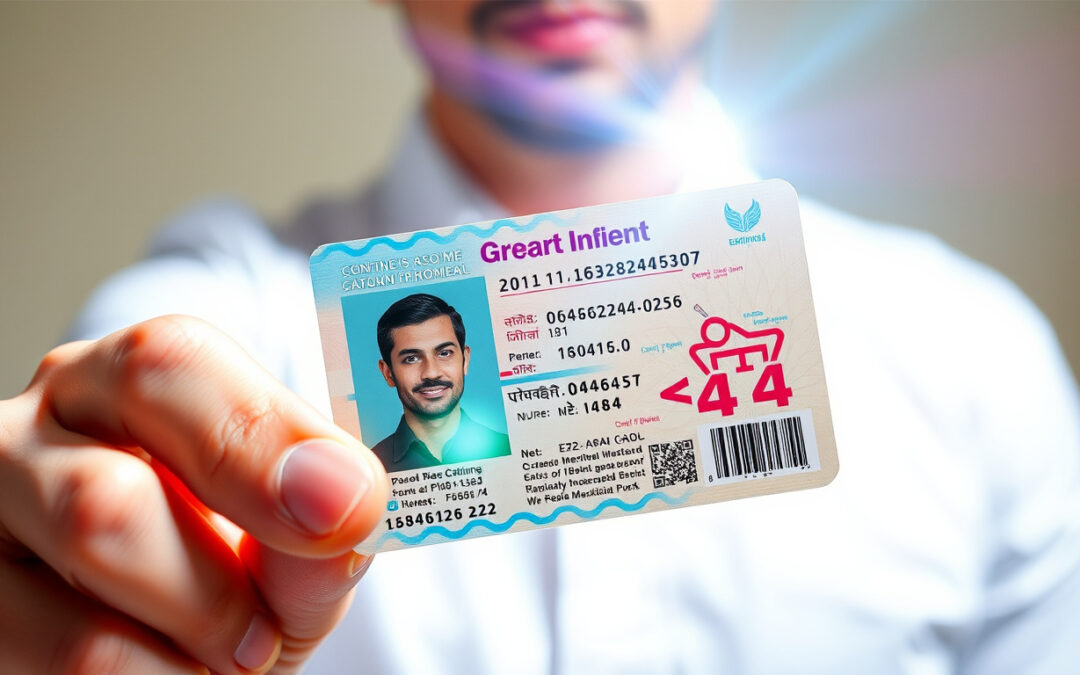
BLOG
In today’s rapidly evolving business landscape, understanding the legal framework and compliance guide is essential for organizations of all sizes. Whether you are a startup navigating the intricacies of the law for the first time or an established business seeking to refresh your compliance strategies, having a firm grasp of the legal landscape is crucial. This article aims to demystify the legal framework and compliance guide by providing insights into the key elements of compliance, the legislation that shapes it, as well as best practices that can help mitigate risks. We’ll also explore common challenges businesses face when navigating these legal waters, and offer resources to ensure ongoing compliance support. By the end of this guide, readers will be better equipped to implement a robust legal compliance strategy that adheres to current regulations and fosters business integrity.

Key Takeaways
- A legal framework provides the structure for understanding laws and regulations in various contexts.
- Compliance requirements vary by industry and necessitate careful consideration to avoid legal pitfalls.
- Key legislation, such as data protection laws, plays a fundamental role in shaping compliance practices.
- Implementing best practices for legal compliance can mitigate risks and enhance organizational integrity.
- Ongoing support and resources are essential for adapting to changes in legal frameworks and maintaining compliance.
Introduction to Legal Frameworks
In today’s dynamic legal landscape, understanding the intricacies of a legal framework and compliance guide is essential for businesses and organizations to operate effectively. A legal framework provides the structural underpinnings for laws, regulations, and guidelines that govern various sectors, including business, healthcare, and environmental standards. Compliance, on the other hand, involves adhering to these established legal stipulations to mitigate risks, avoid penalties, and maintain a positive reputation. As regulatory requirements evolve, having a robust legal framework and compliance guide ensures that entities can navigate complex legal environments, aligning their operations with prevailing laws while fostering ethical practices and accountability. This article will delve into the key components of legal frameworks, the importance of compliance, and practical steps for organizations seeking to develop or enhance their legal strategies.
Understanding Compliance Requirements
In today’s complex business landscape, understanding the legal framework and compliance guide is essential for any organization seeking to maintain its credibility and safeguard its operations. Compliance requirements vary by industry and region, encompassing everything from data protection laws to health and safety standards. By familiarizing yourself with the legal framework that governs your business, you can anticipate regulatory changes, mitigate risks, and ensure that your organization adheres to required standards. This proactive approach not only helps in avoiding hefty fines and legal troubles but also builds trust with clients and stakeholders. In this article, we will break down the key aspects of a comprehensive compliance guide and explore how businesses can effectively navigate the intricate regulatory environment.
‘The law is not a mere code of rules, but a living embodiment of the freedom and community values we strive to protect and uphold.’ – Unknown

Key Legislation and Regulations
Understanding the legal framework and compliance guide is essential for businesses and individuals alike, as it lays the groundwork for navigating the complex world of laws and regulations. The key legislation often comprises federal, state, and local laws, all of which must be adhered to in order to operate efficiently and responsibly. For instance, laws such as the Sarbanes-Oxley Act and the General Data Protection Regulation (GDPR) highlight the necessity of maintaining transparency and protecting personal information. Additionally, industry-specific regulations, such as those governing healthcare, finance, and environmental practices, pose unique compliance challenges. By staying informed about these relevant statutes and regulations, individuals can better understand their rights and obligations while ensuring that their business operations align with current legal standards. Therefore, a well-structured legal framework and compliance guide not only aids in mitigating legal risks but also fosters a culture of accountability and ethical behavior within organizations.
Best Practices for Legal Compliance
Navigating the complex landscape of legal regulations is crucial for businesses of all sizes. A comprehensive legal framework and compliance guide is essential for ensuring that your organization adheres to applicable laws and regulations while minimizing risk. To develop an effective compliance strategy, companies should first conduct a thorough risk assessment to identify potential legal vulnerabilities. This should be followed by establishing clear policies and procedures that align with relevant legislation and industry standards. Employee training plays a vital role in fostering a culture of compliance, ensuring everyone understands their responsibilities regarding legal obligations. Additionally, regular audits and reviews of compliance efforts can help organizations stay ahead of changes in the legal environment. By following these best practices, businesses can create a robust legal framework that not only meets compliance requirements but also enhances overall operational integrity.

Challenges in Navigating Legal Frameworks
Navigating the complexities of a legal framework can often present significant challenges for businesses and individuals alike. Understanding the nuances of laws and regulations in various jurisdictions is crucial to ensure compliance and mitigate risks. A comprehensive legal framework and compliance guide can serve as an invaluable resource in simplifying these complexities. Such a guide typically outlines the key legal requirements that must be adhered to, helping organizations align their operations with relevant legislation. Furthermore, it can highlight potential pitfalls, ensuring that stakeholders are aware of compliance obligations that may vary notably between regions. As regulations continue to evolve, leveraging a thorough compliance guide can empower businesses to stay informed, remain adaptable, and proactively manage their compliance strategies to avoid costly penalties and reputational damage.
Resources for Ongoing Compliance Support
In today’s rapidly evolving regulatory landscape, maintaining adherence to laws and regulations is crucial for any organization seeking to foster trust and mitigate risks. A comprehensive legal framework and compliance guide serves as an essential resource for businesses of all sizes. It typically outlines the applicable legal obligations, industry standards, and best practices to ensure that your organization remains compliant. Utilizing a well-documented compliance guide can streamline your processes, helping you to identify potential areas of vulnerability while also providing clear instructions for ongoing compliance management. Furthermore, many organizations provide ongoing support and training to interpret complex legal requirements and implement effective strategies. By leveraging these resources, businesses can not only safeguard themselves against potential legal ramifications but also enhance their overall operational efficiency.

BLOG
In today’s competitive marketplace, businesses are continually seeking ways to differentiate themselves and foster long-term success. One powerful approach that has gained significant traction is social responsibility. Incorporating social responsibility into your business model not only improves your brand reputation but also attracts loyal customers, motivated employees, and sustainable growth. This article explores how effective social responsibility strategies can enhance business success and provides practical guidance on implementing them successfully.
Understanding Social Responsibility
Social responsibility refers to the ethical obligation companies have to contribute positively to society and minimize their negative impacts. It encompasses a broad array of practices aimed at promoting environmental sustainability, social equity, and economic development. For businesses, embracing social responsibility means integrating social and environmental considerations into daily operations and strategic decision-making.
Why Social Responsibility Matters in Business
There are several compelling reasons why social responsibility is not just a moral choice but a strategic one:
- Enhanced Brand Image and Loyalty: Consumers increasingly prefer brands that demonstrate genuine concern for societal issues, leading to stronger customer loyalty.
- Attracting and Retaining Talent: Employees want to work for companies aligned with their values, improving recruitment and retention.
- Operational Cost Savings: Sustainable practices often reduce costs—think energy savings or waste reduction.
- Risk Management: Proactively addressing social and environmental concerns reduces legal and reputational risks.
- Market Differentiation: Social responsibility can set your business apart from competitors.
Implementing Effective Social Responsibility Strategies
To harness the full benefits of social responsibility, companies need a structured and authentic approach. Here are key steps to develop and implement impactful strategies:
1. Define Clear Values and Objectives
Start by identifying core values aligned with social responsibility. These could include sustainability, community engagement, or ethical labor practices. Set measurable objectives that guide actions and decision-making aligned with these values.
2. Engage Stakeholders
Engage employees, customers, suppliers, and community groups to understand their expectations and collaboratively develop initiatives. Transparent communication fosters trust and encourages stakeholder participation.
3. Conduct Materiality Assessments
Identify areas where social responsibility efforts will have the most significant impact on your business and society. This focus allows for resource optimization.
4. Develop Actionable Programs
Implement programs such as:
- Environmental sustainability initiatives (e.g., reducing carbon footprint)
- Community outreach projects
- Ethical sourcing policies
- Employee volunteering programs
5. Measure and Report Progress
Use key performance indicators (KPIs) to track the effectiveness of social responsibility initiatives. Regular reporting, preferably in accordance with recognized standards like the GRI (Global Reporting Initiative), enhances transparency and accountability.
6. Integrate into Corporate Culture
Embed social responsibility into your company’s culture through training, leadership support, and recognition programs. Authenticity is crucial; superficial efforts can backfire.
7. Communicate Successes and Challenges
Share your progress and areas for improvement openly with stakeholders through newsletters, social media, and annual reports. Celebrating successes builds credibility and encourages ongoing support.

Real-World Examples of Effective Social Responsibility
Many leading companies demonstrate how social responsibility strategies contribute to success:
- ** Patagonia**: Known for its environmental activism and sustainable products, Patagonia’s commitment has earned it a loyal customer base and positive brand reputation.
- Ben & Jerry’s: Their social mission includes promoting fair trade and climate activism, aligning their values with their brand identity.
- Unilever: Through its Sustainable Living Plan, Unilever aims to decouple growth from environmental impact, resulting in both social impact and financial gains.
Benefits to Your Business
By implementing effective social responsibility strategies, your business can enjoy:
- Improved stakeholder trust
- Increased market share
- Enhanced employee morale and productivity
- Greater resilience to market changes
- Long-term profitability
Challenges and How to Overcome Them
While the benefits are compelling, integrating social responsibility can face hurdles such as limited resources or skepticism about ROI. Overcoming these challenges involves:
- Starting small with pilot projects to demonstrate impact
- Securing leadership buy-in by aligning initiatives with business goals
- Ensuring transparent communication to build trust
- Continuously measuring progress and adjusting strategies
Conclusion
Social responsibility is more than just a trend; it’s a vital component of sustainable business success. Developing and executing effective social responsibility strategies helps companies build trust, foster loyalty, and contribute positively to society—all while enhancing their bottom line. By embedding social responsibility into your core operations and culture, your business can not only thrive in today’s competitive environment but also create a lasting, meaningful impact.
FAQ on Social Responsibility and Business Success
Q1: How does social responsibility influence overall business success?
A1: Social responsibility influences business success by building trust with consumers and stakeholders, attracting loyal customers, improving employee morale, and reducing operational risks. These factors collectively contribute to sustainable growth.
Q2: What are some common social responsibility initiatives that businesses can adopt?
A2: Common initiatives include environmental sustainability programs, ethical sourcing, community engagement projects, employee volunteer programs, and transparency in reporting social and environmental impacts.
Q3: How can small businesses effectively implement social responsibility strategies?
A3: Small businesses can start by setting achievable goals, engaging local communities, practicing responsible sourcing, and communicating transparently with customers. Small steps can lead to meaningful impacts and build a strong reputation.
Sources:
By embracing and integrating social responsibility, your business can unlock new avenues for growth, resilience, and positive societal impact. So, start today—your success depends on it.

BLOG
Understanding the nuances of alcohol service is crucial for anyone working in the hospitality industry, particularly in Louisiana. The state has enacted the Louisiana Responsible Vendor Laws, which provide a framework for managing alcohol service in a responsible manner. From preventing underage drinking to ensuring safe service practices, these laws shape the responsibilities of servers and businesses alike. This guide, ‘Louisiana Responsible Vendor Laws Explained: What Every Server Must Know,’ will address the key components of these laws, outline the training requirements for servers, discuss the consequences of non-compliance, and offer best practices to help you navigate your role effectively and responsibly.

Key Takeaways
- Responsible Vendor Laws aim to promote safe alcohol service in Louisiana.
- Servers must complete specific training to be compliant with Louisiana’s Responsible Vendor Program.
- Non-compliance can lead to severe consequences, including fines and license suspensions.
- Best practices include checking IDs and being aware of guests’ behavior to prevent over-serving.
- Resources are available for servers to stay informed about responsible alcohol service and compliance requirements.
Introduction to Responsible Vendor Laws
When it comes to serving alcohol in Louisiana, understanding the Louisiana Responsible Vendor Laws is crucial for every server in the hospitality industry. These laws are designed to minimize alcohol-related incidents and promote safer drinking practices. Under the law, servers must be educated about the responsible serving of alcoholic beverages, including recognizing signs of intoxication and knowing when to refuse service. Additionally, training programs that comply with these regulations not only equip servers with necessary skills but also offer legal protections for establishments. In this article, we will delve into the essential aspects of Louisiana Responsible Vendor Laws explained, empowering you with the knowledge every server must know to uphold these important guidelines and ensure the safety of both patrons and staff.
Overview of Louisiana’s Responsible Vendor Program
The Louisiana Responsible Vendor Program is a crucial initiative designed to promote responsible service of alcohol in the state. Under the Louisiana Responsible Vendor Laws Explained: What Every Server Must Know, this program establishes a framework that both new and experienced servers must understand to ensure compliance and uphold the highest standards of service. The laws aim to prevent underage drinking, reduce incidents of alcohol-related harm, and promote safe environments for patrons. Participating establishments must train their staff on recognizing intoxication, checking identification, and understanding local alcohol regulations. By being informed and adhering to these guidelines, servers can not only enhance customer safety but also protect their employers from potential legal liability.
‘The law is reason, free from passion.’ – Aristotle

Training Requirements for Servers
Understanding the training requirements for servers in Louisiana is crucial for compliance with the state’s Responsible Vendor Laws, which are designed to ensure the safe service of alcohol. Louisiana Responsible Vendor Laws Explained: What Every Server Must Know encompasses a series of stipulations that every server must adhere to in order to maintain a safe and responsible drinking environment. Firstly, all servers are required to complete a Responsible Vendor Training program, which typically includes education on identifying and preventing underage drinking, recognizing intoxicated patrons, and understanding the consequences of overserving alcohol. These training sessions are not solely focused on legal obligations but also emphasize best practices for customer service and liquor service safety. It’s essential for servers to understand that these laws not only protect them from potential legal repercussions but also promote a healthier drinking culture within their establishments. By actively participating in training, servers can effectively contribute to their workplace’s reputation and ensure that both they and their customers enjoy a safe atmosphere.
Consequences of Non-Compliance
Understanding the consequences of non-compliance with Louisiana Responsible Vendor Laws is crucial for every server working in the state. These laws are designed to promote safe alcohol service and help prevent underage drinking and over-serving. If servers fail to adhere to these regulations, they may face significant penalties including fines, suspension of their alcohol service permits, and even criminal charges in severe cases. Moreover, establishments may suffer reputational damage and legal liabilities stemming from non-compliance. To avoid these repercussions, it is imperative for servers to be well-versed in the intricacies of Louisiana Responsible Vendor Laws, ensuring they know not only how to serve responsibly but also how to identify and mitigate risks associated with alcohol service.
![Best Practices for Servers to Ensure Compliance]()
Best Practices for Servers to Ensure Compliance
Understanding the Louisiana Responsible Vendor Laws is crucial for servers in the hospitality industry. These regulations are designed to promote responsible alcohol service, ensuring that establishments prevent the sale of alcohol to minors and intoxicated individuals. To ensure compliance, servers must undergo proper training, which covers identifying fake IDs, recognizing signs of intoxication, and understanding the consequences of serving alcohol irresponsibly. It’s important for servers to familiarize themselves with the specific requirements of the law, including the necessary documentation and periodic training updates. Additionally, maintaining excellent record-keeping practices can protect both the server and the establishment from potential legal actions. By adhering to these best practices, servers not only safeguard their careers but also contribute to a safe environment for all patrons.
Conclusion and Resources for Further Information
In conclusion, understanding the Louisiana Responsible Vendor Laws is crucial for any server operating in the state. These laws are designed to promote safe and responsible alcohol service, ultimately protecting both the establishments and their patrons. Every server must know the guidelines surrounding ID checking, alcohol service training requirements, and the consequences of non-compliance, which include hefty fines and potential loss of license. For further information and to ensure your establishment adheres to these regulations, consider resources such as the Louisiana Office of Alcohol and Tobacco Control, which provides detailed guidelines, training programs, and updated legal standards. Additionally, attending workshops and seminars on the Responsible Vendor Laws can provide invaluable insight and practical knowledge that every server should possess. Staying informed not only helps you comply with the law but also enhances the safety and satisfaction of your customers.

BLOG
In today’s fast-paced world, organizations are constantly seeking ways to enhance efficiency and productivity. One critical area that often requires optimization is employee training. ‘Express options and how to speed up training’ have become vital topics for businesses looking to develop their workforce quickly and effectively. This article explores the various express training options available, the significance of efficient training methods, and innovative techniques to help organizations streamline their training processes. With a strong focus on leveraging technology and best practices, we’ll delve into how businesses can measure the effectiveness of accelerated training initiatives to ensure they meet their learning objectives.

Key Takeaways
- Express options in training provide flexibility and adaptability for diverse learning needs.
- Efficient training methods are crucial for maximizing time and resource management.
- Techniques such as microlearning and blended learning can significantly speed up training processes.
- Leveraging technology, such as e-learning platforms and mobile apps, enables quicker access to training content.
- Measuring the effectiveness of accelerated training allows for continuous improvement and better outcomes.
Understanding Express Options in Training
When it comes to enhancing the efficiency and effectiveness of your training programs, understanding express options is crucial. Express options refer to a range of strategies and tools designed to streamline the training process, allowing participants to grasp essential skills more quickly. To speed up training, organizations can implement techniques such as microlearning, which breaks down complex topics into bite-sized modules, making information easier to digest. Additionally, utilizing technology, such as mobile learning apps and virtual simulations, can provide instant access to training materials, thus reducing downtime. By incorporating express options into your training curriculum, you not only improve engagement but also significantly accelerate the learning curve, ensuring your team is well-equipped to meet the demands of their roles swiftly.
The Importance of Efficient Training Methods
In today’s fast-paced world, organizations are continually seeking to enhance their workforce’s skills through effective training methodologies. Utilizing express options can significantly streamline this process, allowing companies to speed up training without compromising on the quality of education. By implementing techniques such as microlearning, where training materials are broken down into bite-sized modules, employees can absorb critical information more efficiently. Additionally, integrating technology into training programs—such as virtual simulations and on-demand resources—further facilitates an engaging learning experience. As businesses strive for agility in their training approaches, understanding the importance of efficient training methods enables them to foster a well-trained workforce quickly, which ultimately leads to improved performance and increased productivity.
‘Efficiency is doing better what is already being done.’ – Peter Drucker

Techniques to Speed Up Training Processes
In the fast-paced world of business and technology, organizations are constantly seeking ways to enhance efficiency, and one of the most effective avenues lies in how to speed up training. Implementing express options for training can significantly reduce the time employees spend in training while maximizing the retention of crucial information. Techniques such as microlearning, which breaks down complex material into bite-sized, easily digestible modules, have gained popularity for their ability to cater to different learning styles and maintain engagement. Additionally, integrating interactive elements, such as gamification and simulation-based training, can provide a hands-on experience that promotes faster learning and information retention. Furthermore, leveraging technology, such as Learning Management Systems (LMS), allows organizations to customize training tracks and provide on-demand access to resources, empowering employees to learn at their own pace. By exploring these express options and strategies on how to speed up training processes, companies can create more agile workforces, ready to adapt to ever-evolving business needs.
Leveraging Technology for Faster Training
In today’s fast-paced world, leveraging technology for faster training is essential for organizations aiming to enhance employee performance and engagement. By implementing express options, companies can streamline the onboarding process and tailor learning experiences to the needs of their workforce. Utilizing e-learning platforms, mobile training applications, and virtual simulations can significantly reduce training time while maintaining high-quality content delivery. Additionally, incorporating adaptive learning technologies allows for personalized training paths that cater to individual learning speeds and styles, ultimately speeding up training for all employees. Embracing these technological advancements not only accelerates the training process but also fosters a culture of continuous learning, ensuring that your team remains competitive and ready to tackle new challenges.

Measuring the Effectiveness of Accelerated Training
When organizations seek to enhance employee skills, measuring the effectiveness of accelerated training programs becomes crucial. Accelerated training aims to equip individuals with the necessary skills in the shortest amount of time possible. To truly gauge its effectiveness, it’s essential to monitor key performance indicators such as employee retention rates, pre-and post-training assessments, and on-the-job performance metrics. Utilizing express options for training, such as interactive e-learning modules, intensive workshops, and real-time feedback mechanisms, can significantly speed up training. By incorporating these methods, businesses can streamline the learning process, ultimately leading to a more competent workforce and an improved bottom line. Regular evaluations and adjustments to your training approach will ensure that the accelerated training remains relevant and effective, thereby maximizing the return on investment.
Best Practices for Implementing Express Options
When exploring express options and how to speed up training, it’s essential to focus on several best practices that ensure efficiency and effectiveness in your training program. First, assess your current methods and identify areas where training duration can be reduced without sacrificing quality. Utilizing technology, such as learning management systems, can streamline content delivery and facilitate quicker assessments. Additionally, incorporating blended learning approaches, which combine online and in-person elements, can accelerate the learning process. It’s also crucial to maintain clear communication and set measurable goals; this keeps participants engaged and focused, reducing the time spent on irrelevant topics. Lastly, providing immediate feedback can reinforce learning and address misconceptions promptly, further enhancing the effectiveness of express options in training. By implementing these strategies, organizations can significantly improve the speed and efficiency of their training initiatives.

BLOG
In today’s digital and physical world, having a reliable proof of age is essential for a multitude of activities—from applying for a driver’s license to verifying your identity for online services. Whether you’re opening a bank account, renting a car, or entering a restricted venue, ensuring you have proper proof of age can streamline many processes. But what exactly constitutes reliable proof of age, and how can you obtain it effectively? This comprehensive guide walks you through everything you need to know about securing and verifying your proof of age.
What is Proof of Age and Why is it Important?
Proof of age is an official document or record that confirms your date of birth. It serves as a legal reassurance to institutions or authorities that you are the age you claim to be. Reliable proof of age is crucial because it helps prevent identity theft, underage access, and fraudulent activities. Additionally, many organizations require verifiable proof of age before providing certain services or benefits.
Without valid proof of age, your access to various services may be delayed or denied, making it vital to understand how to obtain and present trustworthy documentation.
Common Types of Proof of Age
There are several forms of proof of age, each varying in reliability and acceptance depending on the context. Here are some of the most recognized documents:
1. Birth Certificate
The most authoritative proof of age, a birth certificate provides official proof of your date of birth issued by government authorities.
2. Passport
A valid passport is widely accepted globally as proof of age and identity due to its detailed verification process.
3. State-Issued Driver’s License or ID Card
Most jurisdictions issue driver’s licenses or state IDs that display your date of birth and photograph, making them common proof of age documents.
4. National Identity Card
In countries that issue national ID cards, these often include your date of birth and serve as reliable proof of age.
5. Court Orders or Adoption Records
In specific cases, legal documents such as court orders or adoption records may be used to verify age, especially if other documents are unavailable.
How to Obtain Reliable Proof of Age
Obtaining proof of age depends on your circumstances and the documents you already possess. Here are the key steps to ensure you’re well-equipped with reliable proof of age.
Step 1: Determine What Documents Are Accepted
Research the specific requirements of the entity requesting proof of age. Different institutions or countries have varying standards, but generally, government-issued documents like birth certificates and passports are highly reliable.
Step 2: Gather Necessary Documentation
Collect all relevant documents, such as:
- Birth certificate
- Passport
- State-issued driver’s license or ID card
- National ID card
- Legal documents (court orders, adoption records)

Step 3: Verify the Validity and Currency of Your Documents
Ensure that your documents are valid, up-to-date, and legible. Expired documents may not be accepted, so consider renewal if necessary.
Step 4: Obtain Copies if Necessary
If your original documents are lost or damaged, apply for certified copies from the issuing agency. This process usually involves submitting an application form and paying a fee.
Step 5: Secure Your Documents Properly
Keep your proof of age documents in a safe and accessible location. Physical copies should be stored securely, and digital copies should be backed up in protected cloud storage.
Step 6: Use Certified or Notarized Documents When Needed
In some cases, especially for legal or official purposes, certified or notarized copies of your proof of age are required to authenticate authenticity.
How to Verify the Authenticity of Your Proof of Age
Ensuring your proof of age is valid and verifiable is as important as obtaining it. Here’s how to verify authenticity:
- Check issuing authority: Ensure the document was issued by a legitimate government agency.
- Look for security features: Modern documents like passports and driver’s licenses incorporate security features—watermarks, holograms, microtext—which make forgery difficult.
- Confirm validity dates: Ensure that your documents are current and not expired.
- Use online verification tools: Some governments and organizations offer online verification portals for documents like passports and IDs (source).
Tips for Ensuring Your Proof of Age is Accepted
- Always bring multiple forms of proof when possible.
- Ensure documents are up to date and in good condition.
- Make copies of your documents and keep them stored securely.
- Be prepared to provide additional identification if requested.
- If applying for a new document, complete the application accurately and timely.
Common Challenges and How to Overcome Them
Challenge 1: Missing or Lost Proof of Age Documents
Solution: Request certified copies from the issuing agency. You may need to provide proof of identity and pay a fee.
Challenge 2: Expired or Invalid Documents
Solution: Renew or replace expired documentation at the relevant government office.
Challenge 3: Unrecognized Forms of Proof
Solution: Contact the requesting organization to inquire about acceptable alternative documents or legal affidavits.
When Do You Need to Provide Proof of Age?
Understanding when proof of age is required helps you stay prepared. Common scenarios include:
- Applying for a driver’s license or passport
- Registering for schools or universities
- Buying alcohol or tobacco
- Entering age-restricted venues, such as nightclubs or casinos
- Opening bank accounts or obtaining loans
- Enrollments in certain health programs
- Participating in government or legal proceedings
Frequently Asked Questions About Proof of Age
1. What is the most reliable proof of age?
The most reliable proof of age is a birth certificate or a passport, as these are issued by authorized government agencies and contain official verification details.
2. How can I get a proof of age if I don’t have a birth certificate?
If your birth certificate is unavailable, other options include a valid passport, state ID, or legal affidavits. You can also request a delayed birth certificate or legal proof of age from your local vital records office.
3. Is a school ID card acceptable as proof of age?
While a school ID card may be accepted in some cases, it is generally not considered highly reliable or official for legal verification. Always check with the requesting organization for their specific requirements.
Final Thoughts: Ensuring Your Proof of Age is Reliable
Having proper proof of age is essential for many aspects of life, from legal documentation to everyday activities. The key is to maintain up-to-date, official, and verifiable documents such as birth certificates and passports. By following the outlined steps—gathering the right documents, verifying their authenticity, and storing them securely—you can ensure that your proof of age is always ready when needed.
Remember, staying proactive about obtaining and maintaining your proof of age can prevent unnecessary delays and complications. For more detailed information, consult your local government agency or visit authoritative sources like the U.S. Department of State.
Additional Resources
- Contact your local vital records office for birth certificate applications.
- Visit government websites for up-to-date information on acceptable forms of proof of age.
- Use online tools and verification portals to validate existing documents.
By understanding how to obtain and verify reliable proof of age, you can confidently navigate various official processes, ensuring smooth and secure identity verification every time.

BLOG
In Louisiana, the Responsible Vendor Program plays a crucial role in promoting responsible beverage service and ensuring the safe and responsible sale of alcohol. For businesses looking to serve or sell alcohol, becoming certified as a responsible vendor is essential. This article will address the question on every potential vendor’s mind: How fast can you get certified as a responsible vendor in Louisiana? We will explore the underlying aspects of the Responsible Vendor Program, the eligibility requirements for certification, the step-by-step process involved, the typical duration for certification, the benefits of being recognized as a certified responsible vendor, and what you need to do to maintain your certification through renewal and compliance.

Key Takeaways
- The Responsible Vendor Program in Louisiana aims to promote responsible alcohol sales.
- Eligibility for certification includes specific training and adherence to state regulations.
- The certification process involves several key steps that must be completed in order.
- The duration of the certification process can vary, but preparation can expedite it.
- Being a certified responsible vendor offers numerous benefits, including improved business reputation.
Understanding the Responsible Vendor Program
Understanding the Responsible Vendor Program is crucial for businesses in Louisiana looking to promote a safe environment while selling alcoholic beverages. This program not only helps vendors comply with state laws but also equips them with essential training on responsible alcohol serving practices. If you’re wondering, ‘How fast can you get certified as a responsible vendor in Louisiana?’ the answer largely depends on your commitment to training and the scheduling of courses. Typically, the certification process can range from a few hours to a couple of days, depending on the educational provider. Many institutions offer comprehensive training sessions that can be completed in a single day, incorporating online options for convenience. Following attendance, vendors must pass a certification exam to ensure comprehension of responsible serving standards, after which they can quickly receive their certification. For those eager to comply with Louisiana’s legal requirements and embody responsible serving standards, understanding this program is the first step toward certification.
Eligibility Requirements for Certification
If you are wondering, ‘How fast can you get certified as a Responsible Vendor in Louisiana?’ it is essential to first understand the eligibility requirements that will streamline your certification process. To qualify, applicants must be at least 18 years old and employed by a business that serves or sells alcoholic beverages. Additionally, both the business and the individual must attend state-approved training sessions focused on responsible alcohol service and compliance with Louisiana’s drinking laws. The process typically involves completing a training seminar, passing a test, and submitting an application for certification, which can often be achieved within a few weeks. Staying informed about these requirements not only expedites your certification timeline, but it also ensures your commitment to responsible alcohol service in Louisiana.
‘The secret of success is to be ready when your opportunity comes.’ – Benjamin Disraeli

Step-by-Step Process to Get Certified
If you’re wondering how fast you can get certified as a responsible vendor in Louisiana, you’re in the right place. The certification process is designed to promote responsible alcohol sales and consumption. First, you’ll need to select an accredited training provider. Many of these providers offer online courses that can be completed at your own pace, typically within a few hours. After completing the course, you’ll take an exam to assess your understanding of responsible beverage service practices. Once you pass, you will receive your certification, often the same day. Keep in mind that the entire process can be completed in as little as one day, depending on your schedule and the efficiency of the training provider. Finally, always check to ensure that your certification is recognized by the Louisiana Office of Alcohol and Tobacco Control to avoid any compliance issues.
Duration of the Certification Process
The duration of the certification process for becoming a Responsible Vendor in Louisiana can vary depending on several factors. Generally, applicants can expect the entire process to take anywhere from a few days to several weeks. To kick off your certification journey, you’ll need to complete an approved training course, which typically lasts about four hours. After passing the examination, you must submit your application to the Louisiana Office of Alcohol and Tobacco Control. While this can be done relatively swiftly, approval times may vary depending on the volume of applications being processed at any given time. To expedite your certification, ensure all required documents are ready and double-check your application for accuracy. Ultimately, understanding how fast you can get certified as a Responsible Vendor hinges on your preparedness, the efficiency of the training provider, and processing times at the regulatory office.

Benefits of Being a Certified Responsible Vendor
Being a certified responsible vendor in Louisiana not only enhances your business’s reputation but also comes with several significant benefits that can contribute to your success in the hospitality industry. Firstly, certification demonstrates compliance with state regulations, ensuring that your establishment adheres to the laws governing the sale and service of alcohol. This compliance reduces the risk of penalties and liabilities associated with underage drinking or overserving customers. Additionally, certified vendors often enjoy increased customer trust, leading to enhanced loyalty as patrons feel safer when they know responsible practices are in place. Furthermore, many local governments provide incentives for responsible vendors, such as reduced insurance rates and eligibility for grants. In terms of operational efficiency, training employees on responsible service can lead to a more informed staff that handles difficult situations smoothly, ultimately contributing to a positive atmosphere in your establishment. If you’re wondering, ‘How fast can you get certified as a responsible vendor in Louisiana?’ the process typically ranges from a few days to a couple of weeks, depending on the training schedules and the submission of necessary documentation, making it a quick and worthwhile investment for your business.
Maintaining Your Certification: Renewal and Compliance
Maintaining your certification as a responsible vendor in Louisiana is crucial not only for compliance but also for sustaining your business’s credibility. Many prospective vendors often ask, ‘How fast can you get certified as a responsible vendor in Louisiana?’ The process typically involves understanding the state’s regulations, completing the necessary training programs, and submitting required documentation. Once you have completed an approved training course, the certification can often be obtained within a week to ten days. However, staying compliant means regularly renewing your certification, as well as adhering to state laws regarding alcohol service and sales. By ensuring that you keep your certification current and remain compliant with ongoing training requirements, you not only protect your establishment from potential legal issues but also foster a responsible drinking environment that benefits the entire community.




















